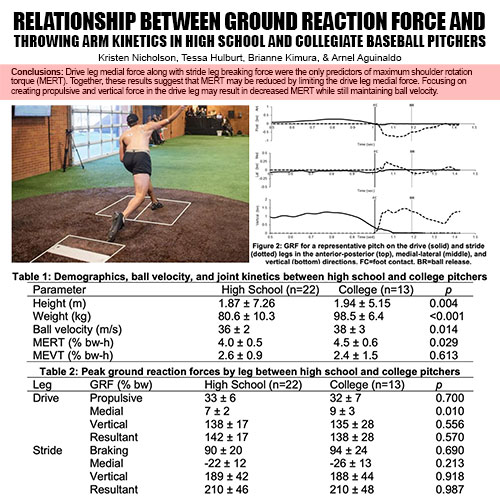
The 3X Pitching method was developed to teach and train baseball pitchers on how to optimize the pitching delivery. Here are some of the basic pitching biomechanics to increase pitching velocity while reducing the risk of injury.
Pitching is the fastest human movement ever recorded in a laboratory. This means it is an incredibly complex movement. To simplify the process of understanding this complex skill is to break it down into two parts. Basically, the lower half and the upper half. Evidence suggests that the ground reaction forces of the drive leg contribute to an increase in linear wrist velocity which will allow the pitcher to maintain pitching velocity while reducing stress to the arm (Nicholson, Hulburt, Kimura, & Aguinaldo, 2019). Evidence also suggests that the landing or front leg braking ground reaction forces strongly correlate to pitching velocity (Guido, & Werner, 2012). This is an indication that training pitchers to better use the lower half will not only increase performance but will reduce injury in the process. The reason is more linear wrist velocity coming from the drive leg will require less glove arm energy which typically means the pitchers will pull the glove arm to the glove arm side accelerating a more rotational trunk. This glove side pulling is overcompensating for the lack of back leg power which typically generates a more linear trunk movement.
There are similar effects to performance and injury potential in the upper body. The ability of the pitcher to separate the hips and shoulders while also enhancing more of the trunk power moving towards the target will create a similar effect of increasing pitching velocity while reducing stress to the arm. Evidence suggests that pitchers who have a larger margin when the hip rotation peaks and the shoulder rotation peaks throw at higher pitching velocities (Dave, Glenn, & James, 2009). This evidence also suggests that when the pitcher is able to move his trunk farther forward this will have a strong correlation with both increasing pitching velocity while reducing stress to the throwing arm.
There are only two pitching biomechanics that strongly correlates to both increasing throwing velocity while reducing stress to the throwing arm which is hip to shoulder separation and more forward trunk tilt into pitch release. The challenge is training pitchers how to perform these movements which takes an elite amount of joint mobility and power to sequence the biomechanics correctly while peaking pitching velocity to an optimal level.
Basic Pitching Biomechanics Reference
Dave, F., Glenn, S. F., & James, R. A., (2009). Baseball Pitching Biomechanics in Relation to Injury Risk and Performance. Sports Health, 1(4), 314–320.
Guido, J. A., & Werner, S. L. (2012). Lower-extremity ground reaction forces in collegiate baseball pitchers. The Journal of Strength and Conditioning Research. 26(7), 1782-5.
Nicholson, K., Hulburt, T., Kimura, B., & Aguinaldo, A. (2019). Relationship Between Ground Reaction Force and Throwing Arm Kinetics in High School and Colligate Baseball Pitchers. Oxford, OH: 37th International Society of Biomechanics in Sport Conference.

